Healthcare data integration plays a pivotal role in modern healthcare systems. It empowers healthcare professionals with comprehensive patient insights, enhancing clinical decision-making and improving care coordination. By integrating data, hospitals can reduce operational costs, speed up processes, and improve overall patient care. This integration also introduces more personalized care, limits inaccurate diagnoses, and identifies methods of disease prevention. Tools like FineDataLink, FineBI, and FineVis facilitate this process, offering real-time data integration, advanced analytics, and dynamic visualizations. Mastering these tools is crucial for improving patient care and operational efficiency.

The Importance of Healthcare Data Integration
Healthcare data integration holds immense significance in today's medical landscape. It serves as a cornerstone for enhancing patient care and boosting operational efficiency. By seamlessly connecting disparate data sources, healthcare providers can unlock a wealth of information that improves decision-making and streamlines processes.
Enhancing Patient Care by Healthcare Data Integration
Improving Diagnosis and Treatment
Healthcare data integration plays a vital role in refining diagnosis and treatment. By consolidating patient information from various sources, healthcare professionals gain a comprehensive view of a patient's medical history. This holistic perspective enables more accurate diagnoses and personalized treatment plans. For instance, integrating data from electronic health records (EHRs) with lab results and imaging studies allows doctors to make informed decisions swiftly. This integration reduces the risk of misdiagnosis and ensures that patients receive the most effective care possible.

Facilitating Coordinated Care
Coordinated care becomes more achievable through healthcare data integration. When healthcare providers have access to a unified data platform, they can collaborate more effectively. This collaboration ensures that all members of a patient's care team are on the same page, reducing the likelihood of redundant tests or conflicting treatments. As a result, patients experience smoother transitions between different levels of care, leading to improved outcomes and higher satisfaction.

Operational Efficiency Enhanced by Healthcare Data Integration
Streamlining Administrative Processes
Healthcare data integration significantly streamlines administrative processes. By automating tasks such as billing and scheduling, healthcare facilities can reduce the burden on administrative staff. This automation not only saves time but also minimizes errors that can occur with manual data entry. For example, integrated systems can automatically update patient records and insurance information, ensuring that billing is accurate and timely. This efficiency allows healthcare providers to focus more on patient care rather than paperwork.
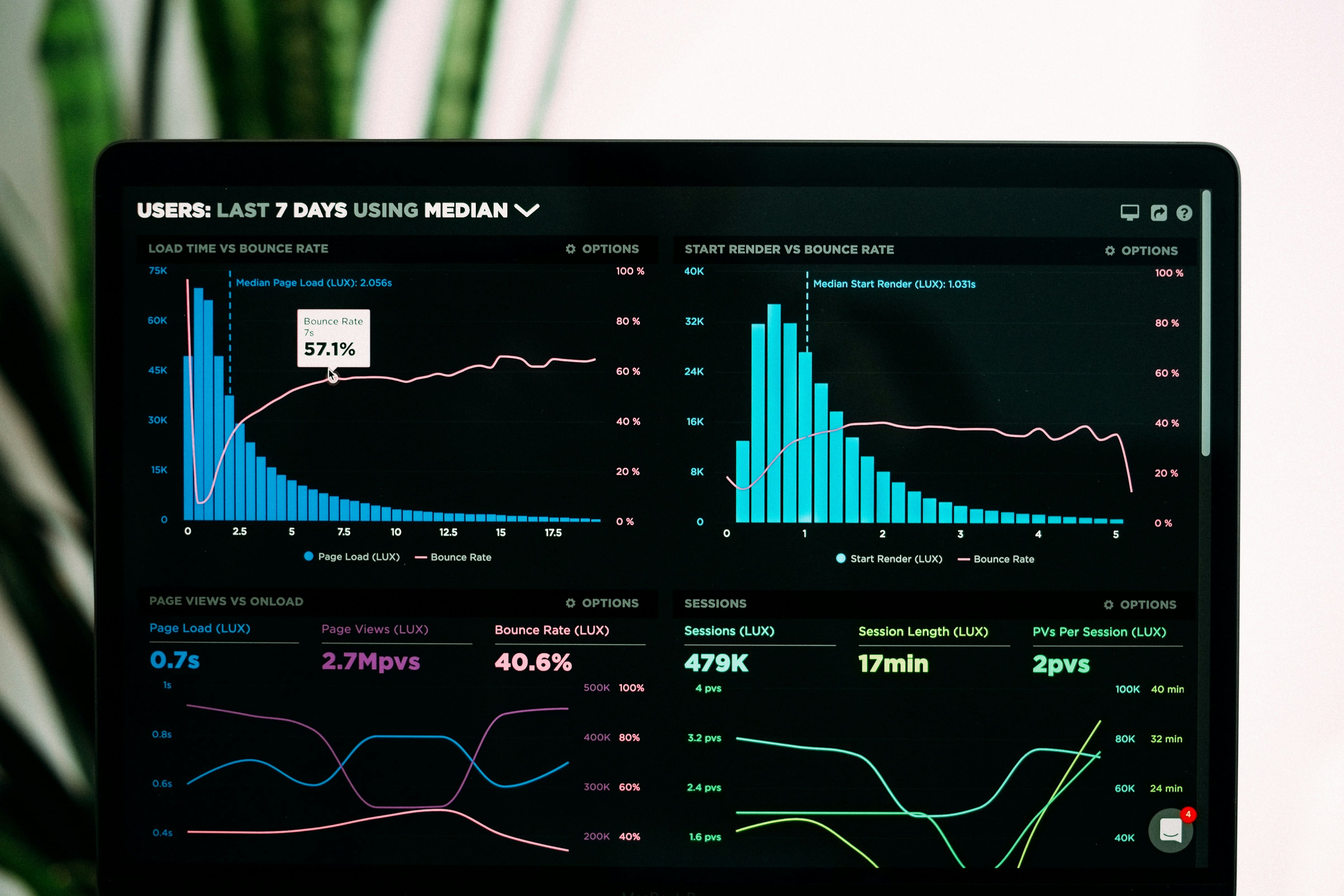
Reducing Redundancies and Costs
Reducing redundancies and costs stands as a key benefit of healthcare data integration. By eliminating duplicate tests and procedures, healthcare organizations can cut unnecessary expenses. Integrated data systems provide a clear picture of a patient's previous treatments and tests, preventing the repetition of services. This reduction in redundancy not only saves money but also conserves valuable resources, allowing healthcare facilities to allocate them more effectively.
Benefits of Effective Healthcare Data Integration
Healthcare data integration offers numerous advantages that significantly enhance the quality of care and operational efficiency in medical settings. By effectively integrating data, healthcare providers can access comprehensive patient records and improve data accessibility, leading to better decision-making and collaboration.
Comprehensive Patient Records
Healthcare data integration enables the creation of comprehensive patient records by consolidating information from various sources. This integration provides a holistic view of a patient's medical history, which is crucial for informed decision-making.
Enabling Better Decision-Making
Access to complete patient records allows healthcare professionals to make better decisions. By analyzing integrated data, providers can identify trends and patterns that inform treatment plans. For instance, data from electronic health records (EHRs), lab results, and imaging studies can be combined to offer a detailed understanding of a patient's condition. This comprehensive insight supports accurate diagnoses and effective treatment strategies, ultimately improving patient outcomes.

Supporting Personalized Medicine
Personalized medicine thrives on the availability of detailed patient data. Healthcare data integration facilitates this by providing access to a wealth of information that can be used to tailor treatments to individual needs. With integrated data, healthcare providers can develop customized treatment plans that consider a patient's unique genetic makeup, lifestyle, and medical history. This approach not only enhances the effectiveness of treatments but also reduces the risk of adverse reactions.
Improved Data Accessibility
Improved data accessibility is another significant benefit of healthcare data integration. By breaking down data silos, healthcare organizations can ensure that critical information is readily available to those who need it.
Real-Time Data Sharing
Real-time data sharing becomes possible through effective healthcare data integration. This capability allows healthcare providers to access up-to-date information, enabling timely interventions and reducing delays in patient care. For example, IoT-enabled wearables can continuously monitor patients with chronic conditions, providing real-time data that informs personalized treatment plans. This proactive approach helps in managing conditions more effectively and preventing complications.
Enhanced Collaboration Among Providers
Healthcare data integration fosters enhanced collaboration among providers by creating a unified platform for data access. When healthcare professionals can easily share and access patient information, they can work together more efficiently. This collaboration ensures that all members of a patient's care team are aligned, reducing the likelihood of redundant tests or conflicting treatments. As a result, patients benefit from coordinated care that improves outcomes and satisfaction.
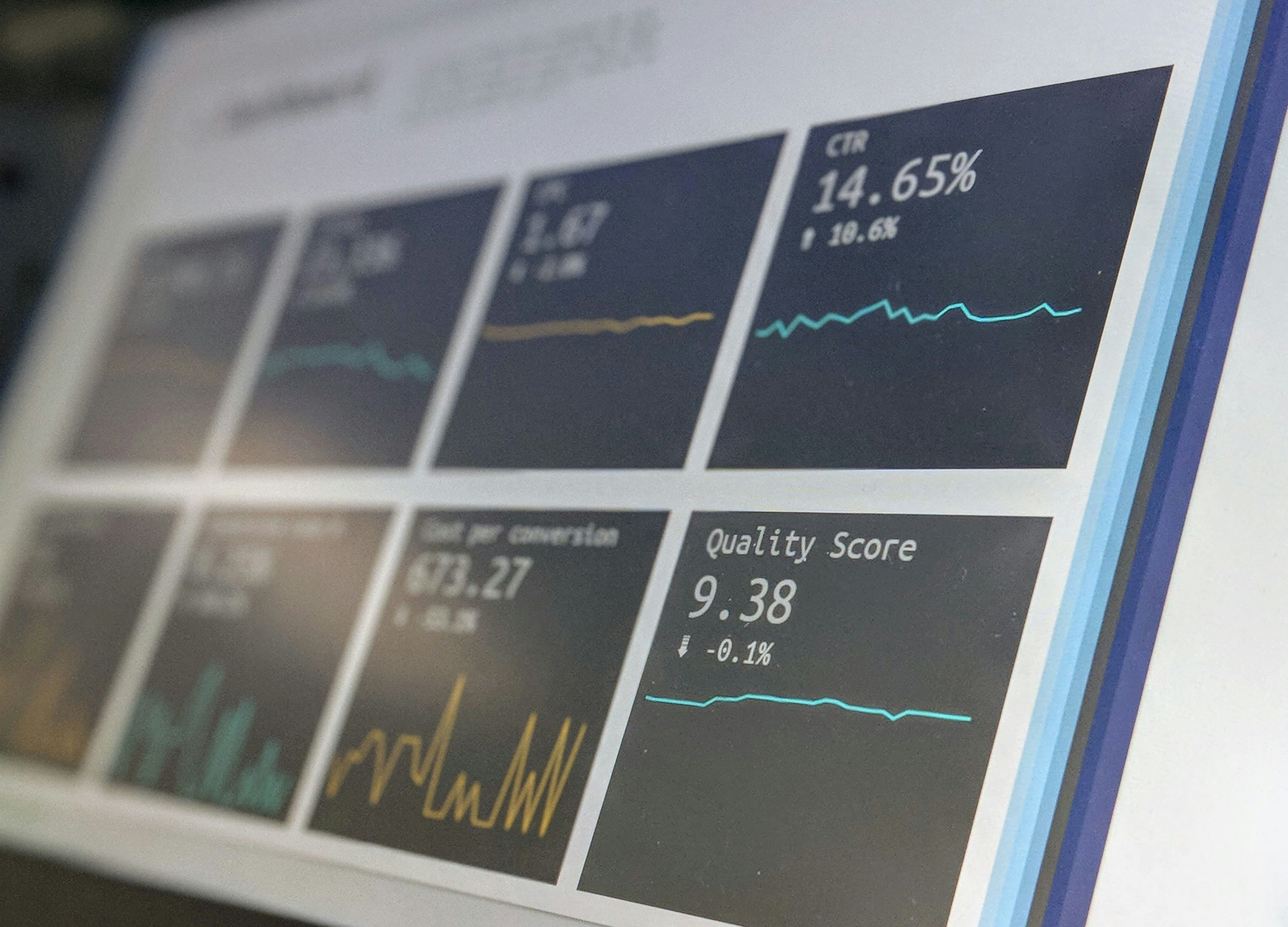
Challenges in Healthcare Data Integration
Healthcare data integration presents several challenges that organizations must address to ensure seamless and secure data exchange. These challenges often revolve around data silos, interoperability issues, and data privacy concerns.
Data Silos and Interoperability Issues
Data silos occur when information is isolated within different departments or systems, hindering effective healthcare data integration. Overcoming these silos requires addressing system incompatibilities and bridging communication gaps.
Overcoming System Incompatibilities
Healthcare organizations often use diverse systems that may not communicate effectively with each other. This lack of interoperability can impede the flow of information, leading to inefficiencies. To overcome this, healthcare providers should adopt standardized protocols like HL7 and FHIR. These standards facilitate seamless data exchange between systems, ensuring that healthcare professionals have access to comprehensive patient information.
Bridging Communication Gaps
Bridging these gaps involves implementing robust data governance frameworks. By establishing clear guidelines for data sharing and management, healthcare organizations can ensure that information flows smoothly across systems. This approach not only enhances data accessibility but also improves the quality of care provided to patients.
Data Privacy and Security Concerns
Data privacy and security remain paramount in healthcare data integration. Protecting sensitive patient information requires strict adherence to regulations and the implementation of advanced security measures.

Ensuring Compliance with Regulations
Healthcare organizations must comply with stringent data privacy regulations such as HIPAA and GDPR. These regulations mandate the protection of patient data and require organizations to implement appropriate safeguards. Compliance involves developing policies and procedures that ensure data privacy and conducting regular audits to verify adherence to these standards.
"Compliance with regulations is non-negotiable, emphasizing a holistic approach to secure yet efficient data integration."
Protecting Patient Information
Protecting patient information involves implementing robust security protocols. Organizations should employ encryption and access controls to safeguard data from unauthorized access. Additionally, innovative privacy-enhancing technologies can play a central role in maintaining patient trust. By prioritizing data security, healthcare providers can ensure that patient information remains confidential and secure throughout the integration process.
Best Practices for Successful Healthcare Data Integration
Healthcare data integration stands as a cornerstone for enhancing patient care and operational efficiency. By adopting best practices, healthcare organizations can ensure seamless and secure data exchange, ultimately improving outcomes.

Implementing Robust Data Governance
Robust data governance forms the foundation of successful healthcare data integration. It involves establishing clear policies and procedures that guide data management and usage.
Establishing Clear Policies and Procedures
Healthcare organizations must develop comprehensive policies and procedures to govern data integration. These guidelines should outline how data is collected, stored, and shared. By doing so, organizations can ensure consistency and accuracy in data handling. Clear policies also help in maintaining compliance with regulations, safeguarding patient information, and promoting trust among stakeholders.
Assigning Roles and Responsibilities
Assigning specific roles and responsibilities is crucial for effective data governance. Each team member should understand their duties in the data integration process. This clarity ensures accountability and streamlines operations. For instance, data stewards can oversee data quality, while IT professionals manage technical aspects. By defining roles, healthcare organizations can enhance collaboration and efficiency.
Choosing the Right Integration Tools
Selecting appropriate integration tools is vital for successful data integration. These tools should align with the organization's needs and support seamless data exchange.
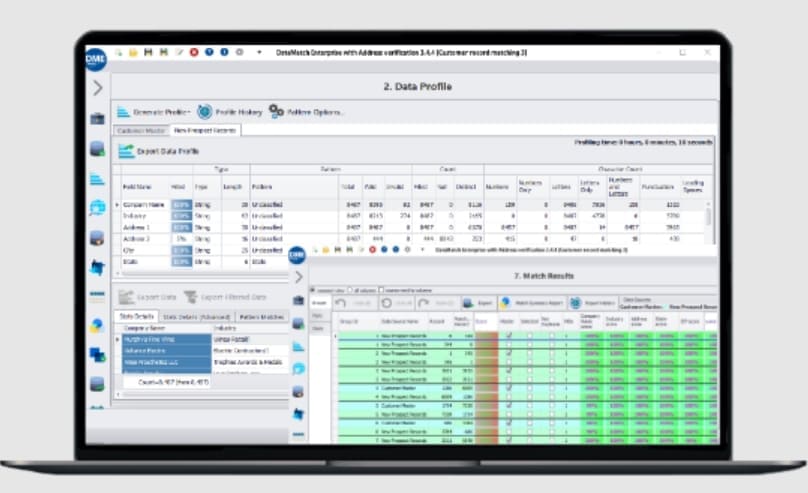
Evaluating Software Solutions
Healthcare providers should evaluate software solutions based on their capabilities and compatibility with existing systems. Integration platforms that translate different data formats into a universal format can ensure compatibility across systems. By choosing the right tools, organizations can unlock the value of data and improve decision-making.
Considering Scalability and Flexibility
Scalability and flexibility are essential factors when selecting integration tools. Healthcare organizations should opt for solutions that can grow with their needs. Flexible tools allow for easy adaptation to changes in reporting standards and care quality goals. By considering these factors, organizations can ensure long-term success in data integration.
Ensuring Data Security and Privacy
Data security and privacy remain paramount in healthcare data integration. Implementing robust security measures protects sensitive patient information and maintains compliance with regulations.
Utilizing Encryption and Access Controls
Encryption and access controls are critical components of data security. Healthcare organizations should employ these measures to safeguard data from unauthorized access. Encryption ensures that data remains confidential during transmission, while access controls restrict data access to authorized personnel only. By prioritizing security, organizations can protect patient information and build trust.

Conducting Regular Security Audits
Regular security audits help healthcare organizations identify vulnerabilities and ensure compliance with regulations. These audits involve reviewing data handling practices and assessing the effectiveness of security measures. By conducting audits, organizations can address potential risks and enhance data protection. This proactive approach ensures that patient information remains secure throughout the integration process.
Emerging Trends in Healthcare Data Integration
The Role of Artificial Intelligence
Artificial Intelligence (AI) is revolutionizing healthcare data integration. It offers innovative solutions that enhance the efficiency and accuracy of data processing.
Automating Data Processing
AI automates data processing by using machine learning algorithms. These algorithms analyze vast amounts of healthcare data quickly and accurately. They identify patterns and trends that might be missed by human analysts. This automation reduces the time and effort required for data management. It also minimizes errors, ensuring that healthcare providers have access to reliable information.
Enhancing Predictive Analytics
AI enhances predictive analytics in healthcare. By analyzing historical data, AI models can predict future health trends and outcomes. This capability allows healthcare providers to anticipate patient needs and allocate resources more effectively. For example, AI can predict the likelihood of disease outbreaks, enabling proactive measures to prevent them. This foresight improves patient care and reduces healthcare costs.
Blockchain Technology
Blockchain technology is emerging as a powerful tool for healthcare data integration. It offers secure and transparent solutions for managing healthcare information.

Securing Data Transactions
Blockchain secures data transactions by creating a decentralized ledger. This ledger records every transaction in a tamper-proof manner. Each entry is encrypted and linked to the previous one, forming a chain. This structure ensures that data remains secure and unaltered. Healthcare providers can trust the integrity of the data, knowing it has not been compromised.
"Blockchain provides the entire history or provenance of data, supporting clinical laboratories, patients, hospitals, and government-funded healthcare organizations in a decentralized way."
Improving Data Traceability
Blockchain improves data traceability by providing a complete history of data transactions. This transparency allows healthcare providers to track the origin and movement of data. It ensures accountability and reduces the risk of data breaches. Smart contracts, a feature of blockchain, automate agreements between parties. They execute transactions automatically when predefined conditions are met, streamlining operations and reducing administrative burdens.
FanRuan's Role in Healthcare Data Integration
FanRuan plays a pivotal role in healthcare data integration by offering a suite of advanced tools designed to streamline processes and enhance data management. These tools include FineDataLink, FineBI, and FineVis, each providing unique capabilities to address various aspects of data integration, analysis, and visualization.
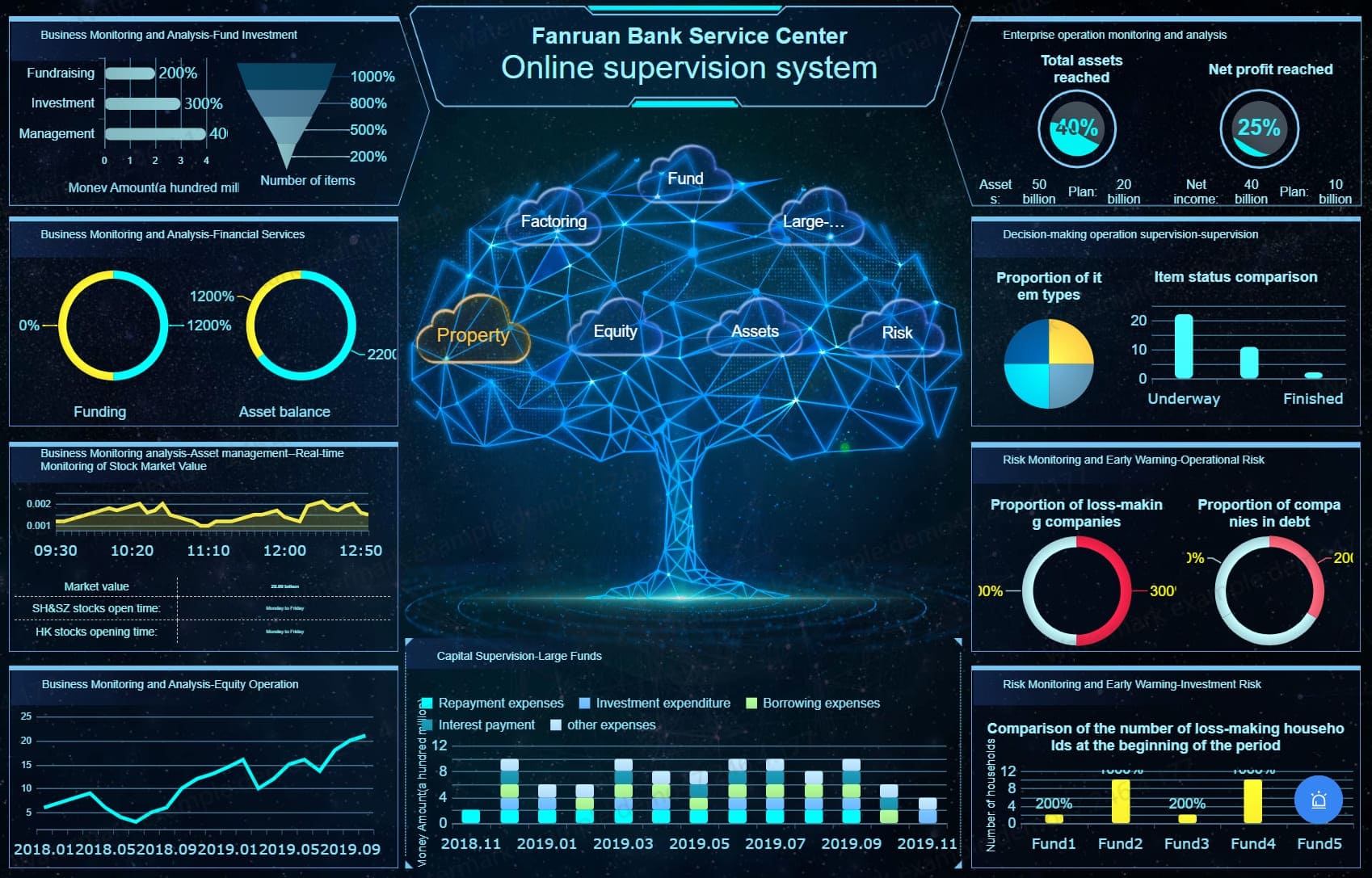
FineDataLink for Seamless Integration
FineDataLink serves as an all-in-one platform for seamless data integration. It simplifies complex tasks, making it easier for healthcare organizations to manage their data efficiently.
Real-Time Data Synchronization
Real-time data synchronization is a standout feature of FineDataLink. It enables healthcare providers to synchronize data across multiple systems with minimal latency. This capability ensures that patient information is always up-to-date, allowing for timely interventions and improved patient care. By reducing the time lag in data updates, healthcare professionals can make informed decisions quickly.
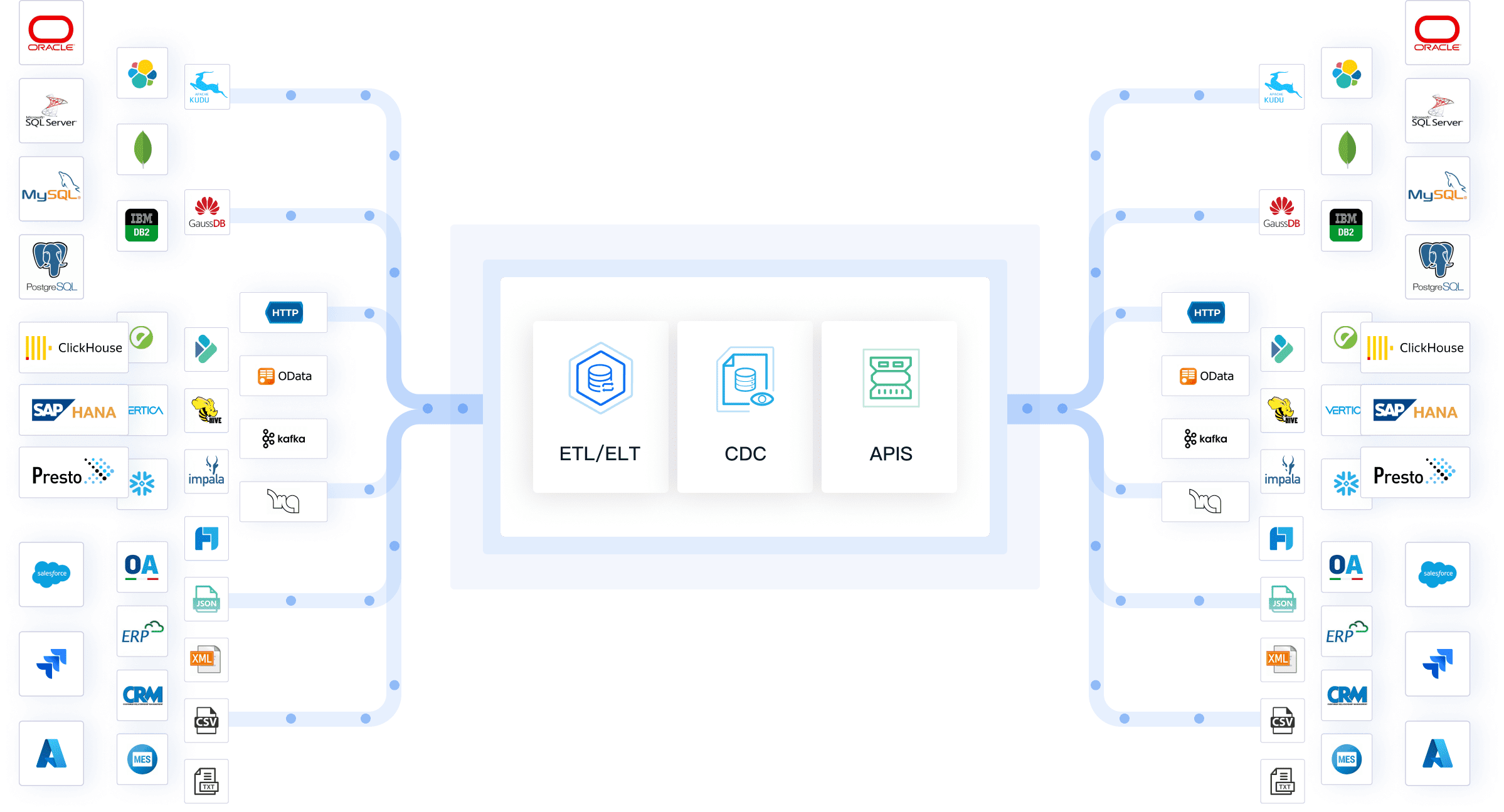
Advanced ETL & ELT Capabilities
FineDataLink also offers advanced ETL (Extract, Transform, Load) and ELT (Extract, Load, Transform) capabilities. These features allow healthcare organizations to process large volumes of data efficiently. The platform's low-code approach simplifies data transformation tasks, enabling users to focus on analyzing data rather than managing it. This efficiency leads to better resource allocation and enhanced operational performance.
FineBI for Enhanced Data Analysis
FineBI empowers healthcare organizations with robust data analysis tools. It facilitates self-service analytics, enabling users to explore data independently and derive meaningful insights.
Self-Service BI and Analytics
Self-service BI and analytics are core components of FineBI. The platform allows healthcare professionals to access and analyze data without relying on IT support. This autonomy fosters a data-driven culture within organizations, encouraging staff to make evidence-based decisions. By democratizing data access, FineBI enhances the overall efficiency of healthcare operations.
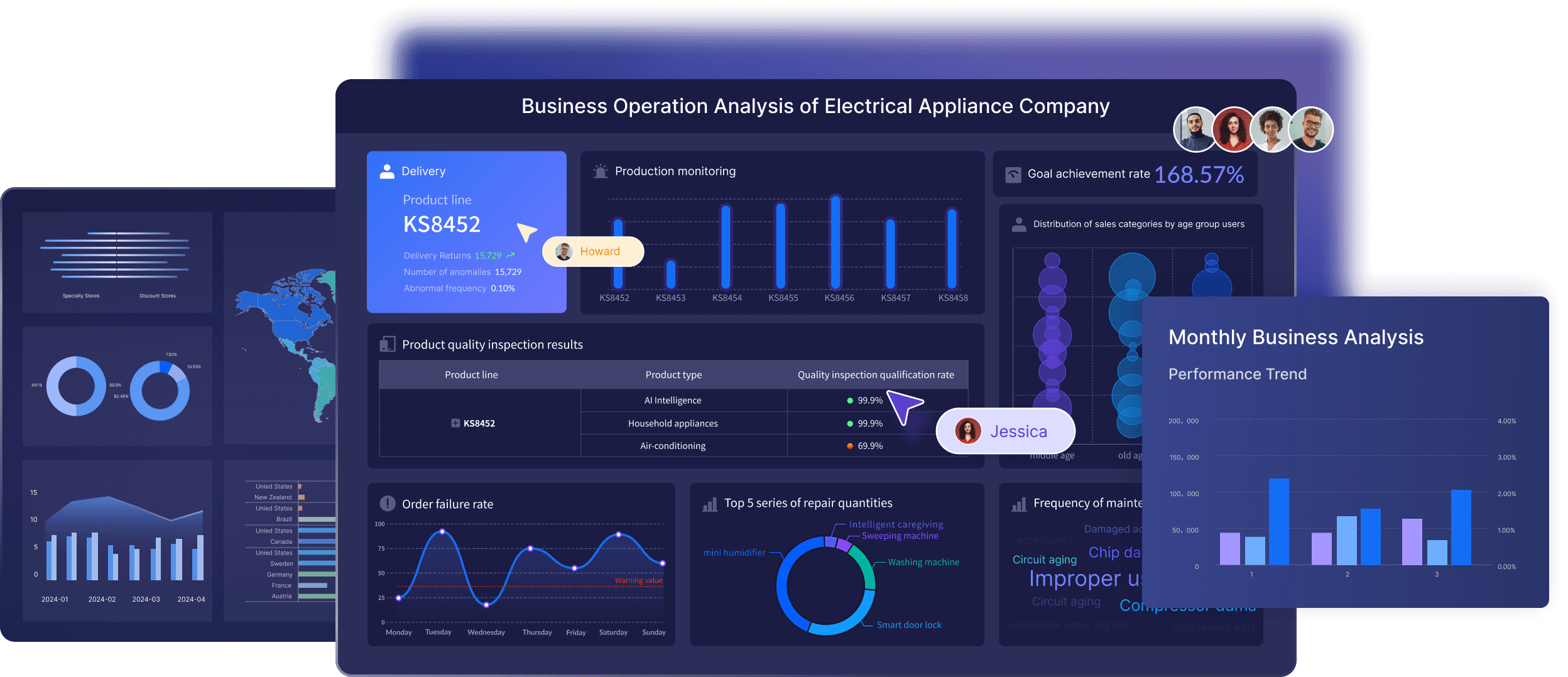
Real-Time Data Insights
Real-time data insights provided by FineBI enable healthcare providers to respond swiftly to changing conditions. The platform's high-performance computing engine processes data rapidly, delivering insights that inform critical decisions. This capability is particularly valuable in dynamic healthcare environments where timely information can significantly impact patient outcomes.
FineVis for Data Visualization
FineVis offers powerful data visualization tools that transform complex data sets into intuitive visual representations. This capability enhances understanding and communication within healthcare organizations.
Interactive Charts and Dashboards
Interactive charts and dashboards are key features of FineVis. They allow healthcare professionals to visualize data in a user-friendly format, making it easier to identify trends and patterns. These visualizations facilitate effective communication among team members, ensuring that everyone is aligned in their understanding of the data.
Real-Time Analytics
Real-time analytics in FineVis provide healthcare organizations with the ability to monitor data continuously. This feature supports proactive decision-making by alerting users to significant changes or anomalies in the data. By leveraging real-time analytics, healthcare providers can optimize their operations and improve patient care.
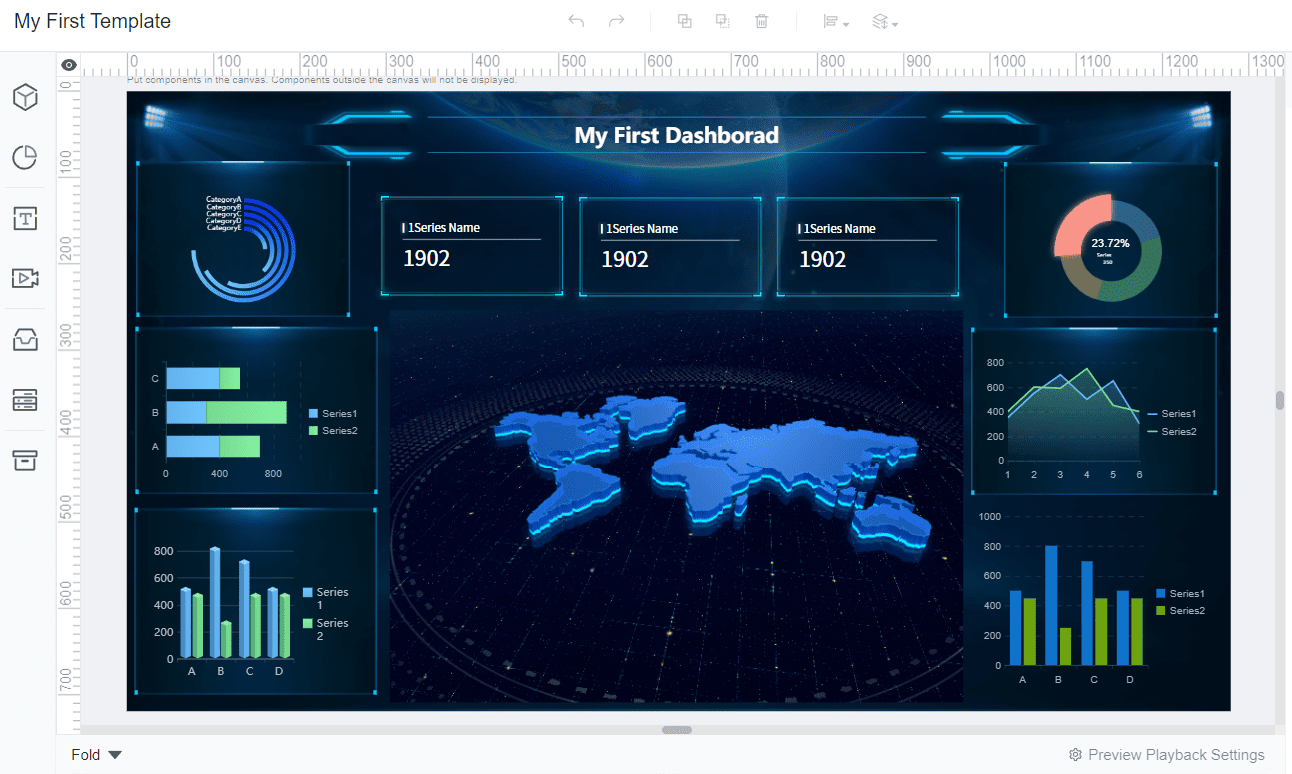
Mastering healthcare data integration offers numerous benefits. It enhances patient outcomes and streamlines operational processes. Healthcare organizations must adopt best practices to overcome challenges like data silos and privacy concerns.
Actionable Steps:
- Implement robust data governance.
- Choose the right integration tools.
- Ensure data security and privacy.
Continuous learning and adaptation to emerging trends, such as AI and blockchain, remain crucial. By embracing these strategies, healthcare providers can transform data into actionable insights, improving both care quality and operational efficiency.
Click the banner below to experience FineBI for free and empower your enterprise to convert data into productivity!
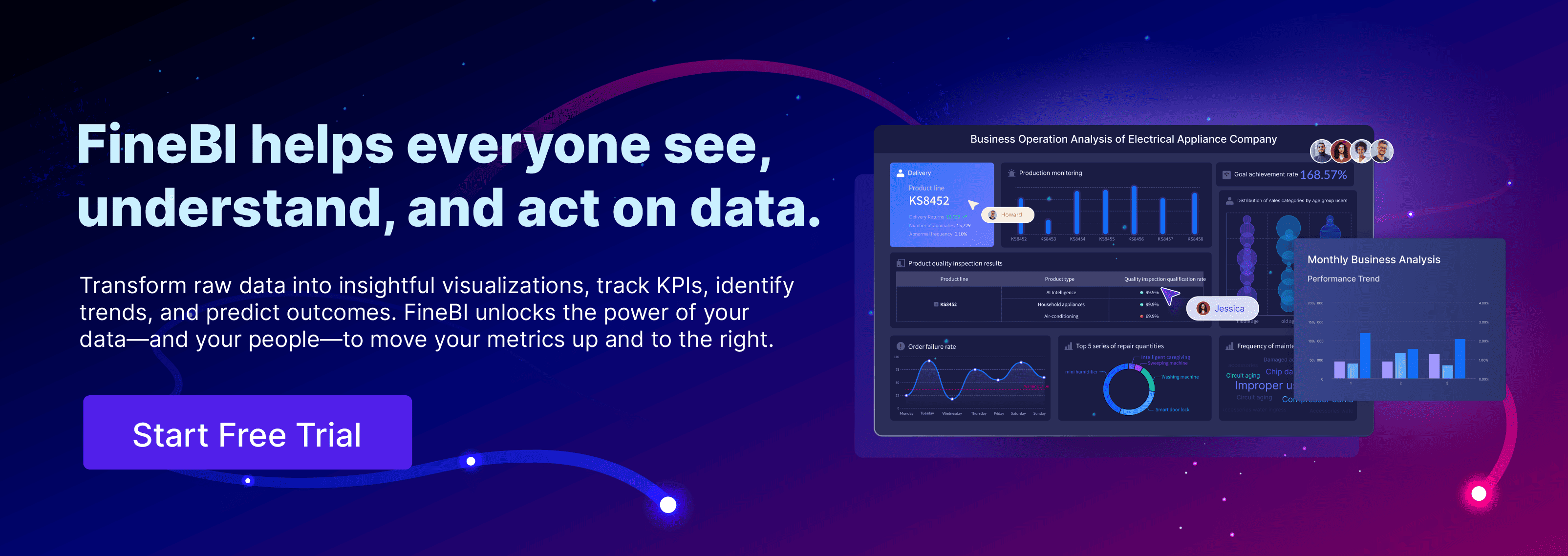
Continue Reading about Data Management
Essential Data Integration: A Beginner's Guide
Top Data Integration Tools: 2025 Guide
Top 10 Data Integration Software for 2025
What is API Data Integration? API vs Data Integration
Best Data Integration Platforms to Use in 2025
Enterprise Data Integration: A Comprehensive Guide
FAQ

The Author
Howard
Data Management Engineer & Data Research Expert at FanRuan
Related Articles

10 Best Data Orchestration Tools for 2025 You Should Know
Compare the best data orchestration tools for 2025 to streamline workflows, boost automation, and improve data integration for your business.
Howard
Nov 28, 2025

10 Best Enterprise ETL Tools for Data Integration
Compare the 10 best enterprise ETL tools for data integration in 2025 to streamline workflows, boost analytics, and support scalable business growth.
Howard
Oct 02, 2025

What is Real Time Data Integration and Why It Matters
Real time data integration connects systems for instant, accurate data access, enabling faster decisions, improved efficiency, and better customer experiences.
Howard
Sep 24, 2025



